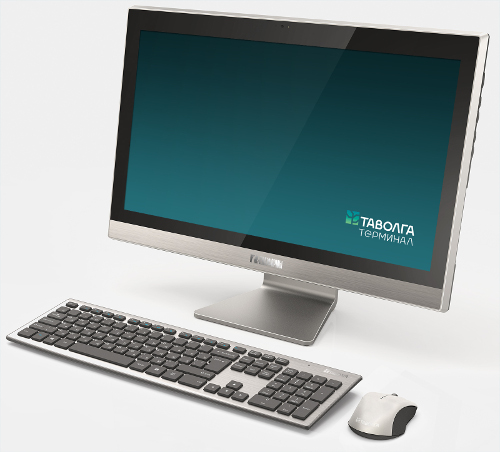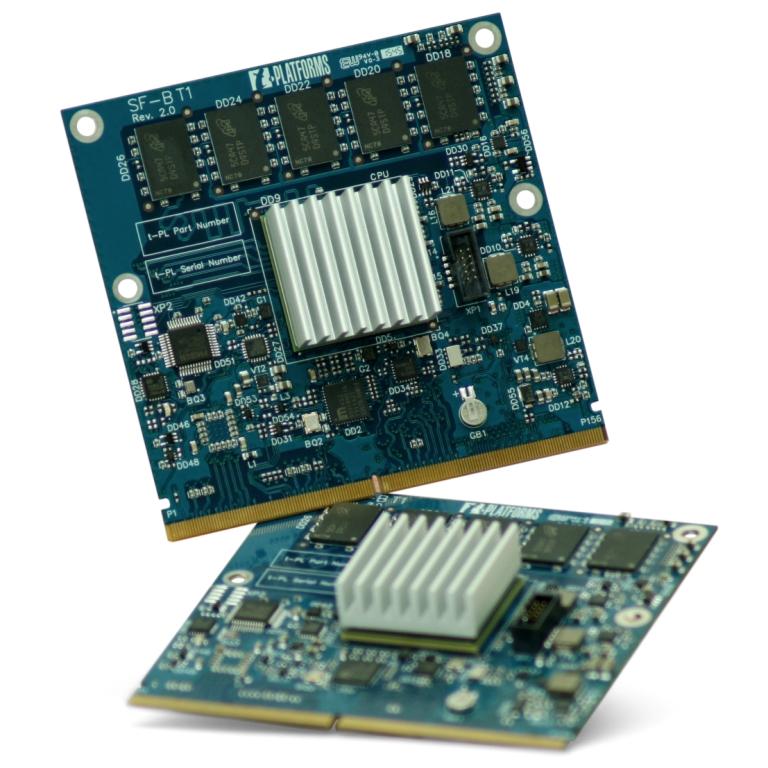MIPS-Based CPU, Debian 8 Underpin Russian T-Platforms' All-In-One PC
Russian company T-Platforms announced that it will start selling an all-in-one PC with the (also Russian) Baikal-T1 chip, which is based on Imagination’s MIPS instruction set architecture. The system will run the latest version of Debian 8, which is one of the more popular Linux distributions out there.
The MIPS-based Baikal-T1 processor was announced last year, after the Russian government signaled that it doesn’t want to rely on American Intel and AMD chips as much. The Baikal-T1 is a dual-core 1 GHz P5600 CPU (apparently underclocked from the original 1.2 GHz frequency). According to Imagination, it has one of the highest performance/MHz and performance/Watt scores.
The Tavolga Terminal TB-T22BT, which is the name of T-Platforms’ all-in-one PC, includes a 21.5-inch IPS display with Full HD resolution, up to 8 GB of DDR3 RAM and optional storage capabilities that range from 8 to 64 GB of nonvolatile memory. Four USB 2.0 ports and one 1,000 Mbps Ethernet port are also supported.
The T-Platforms Tavolga PC is available for pre-order right now, with shipping scheduled for the second quarter of 2016. The company also plans to release a more compact PC that doesn’t come with an integrated display.
The company also announced the new SF-BT1 computer-on-module (COM) system that incorporates the Baikal-T1 SoC and targets device vendors who want to create high-performance IoT platforms, embedded control systems, industrial automation, healthcare or networking equipment.
The Baikal-T1 chip supports Imagination’s OmniShield security features, which enable applications to be isolated in their own secure domain. It also supports the prplSecurity framework, which is a collection of open source APIs that provide hardware-level security controls such as root of trust, secure boot, secure hypervisor and secure inter-VM communications.
Using these features, the prpl Foundation, started by Imagination, demonstrated three different Linux-based operating systems running in parallel on the SF-BT1 module at full performance and isolated from each other in highly secure domains.
Get Tom's Hardware's best news and in-depth reviews, straight to your inbox.
Lucian Armasu is a Contributing Writer for Tom's Hardware. You can follow him at @lucian_armasu.
Lucian Armasu is a Contributing Writer for Tom's Hardware US. He covers software news and the issues surrounding privacy and security.
-
jimmysmitty Gotta love Russia. Doesn't want to rely as much on American technologies so they license a CPU design from a British company that license technology from an American company then use an American designed OS.Reply -
lorfa "optional storage capabilities that range from 8 to 64 GB of nonvolatile memory"Reply
Wait, what? 64 GB hd space max? wtf? -
InvalidError Reply
Since the thing has a few USB2 ports, you can use external storage. With only a dual core 1GHz CPU, that AiO is not going to see much intensive use, so 64GB max built-in should not be much of an issue for most people and that spares the company the trouble of including provisions for an additional internal SSD/HDD.17604183 said:Wait, what? 64 GB hd space max? wtf? -
Outlander_04 ReplyGotta love Russia. Doesn't want to rely as much on American technologies so they license a CPU design from a British company that license technology from an American company then use an American designed OS using another American designed kernal.
When did the Linux Kernel become an American OS ?
The point of course is to eliminate the possibility of HARDWARE being a security threat . The US government is very concerned about the exact same thing .
Typically the Russians have taken the easiest , and arguably smartest , path to control computer systems end to end . Most people in offices will never need more computing power than this , and they will be far more secure than they could ever be while trying to plug NSA back doors in hardware and software on a windows X86 machine

